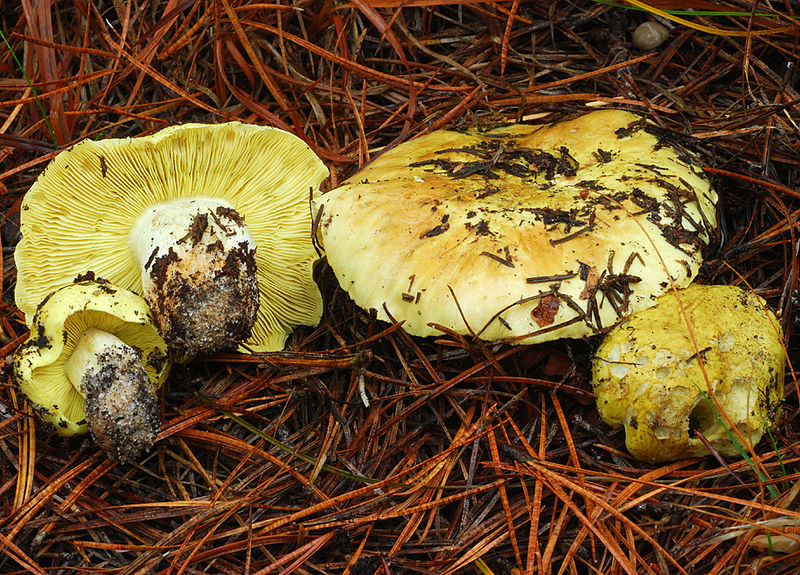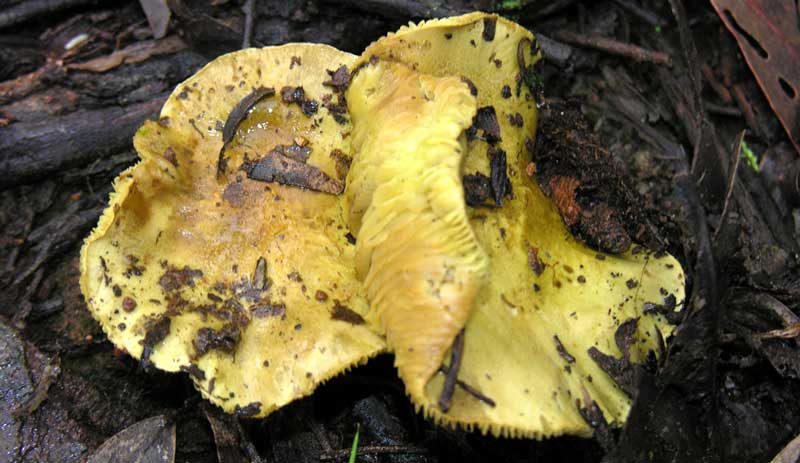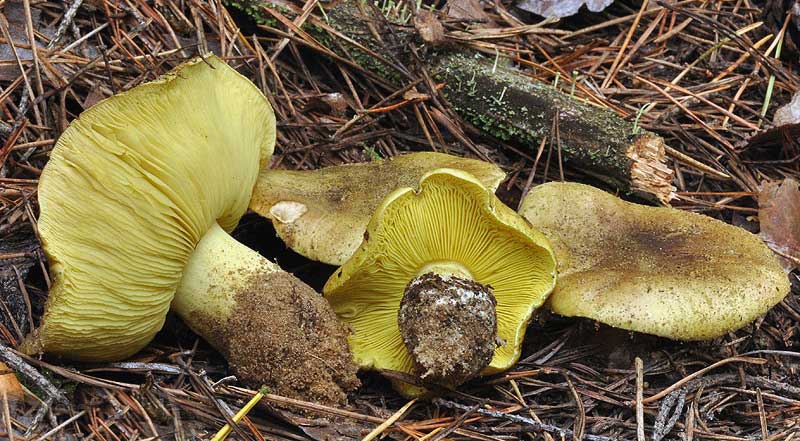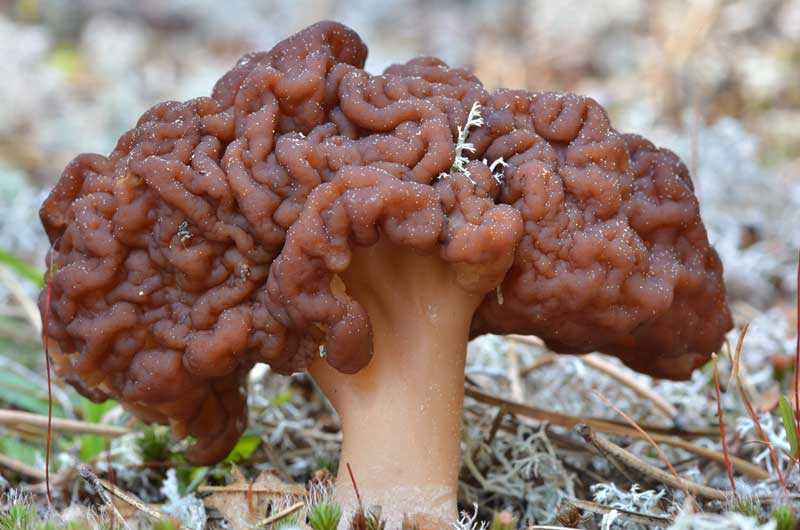Tricholoma equestre: the rider's fungus
2 years ago · Updated 6 months ago

In the history of mushrooms and mycology, there have been species of edible mushrooms that, over time, have gone from being considered true delicacies to being completely banned. This is the case of Tricholoma equestre, also known as the knight mushroom. We tell you all about it
The first discovery that a species of mushroom is edible came from tradition, based on its consumption over many years and by different generations. If a mushroom, no matter how good its aroma and color, has caused poisoning, it will cease to be consumed and popular culture will include it among inedible species. This is what has happened with all the foods we consume today.
But often the discovery that a species is inedible or even toxic or deadly has been made by chance. This is the case with certain varieties such as Paxilus involutus, Gyromitra esculenta, or the famous knight's mushroom, Tricholoma equestre.
Girolle, Tricholoma equestre

The most obvious case of this change in classification from edible to toxic and even deadly came from the Seta de los caballeros. This striking species of tricholoma is very common in most pine forests in our region, and even today many mushroom lovers admit to continuing to pick it for their mushroom baskets. Of course, this is done on a very small scale and with the clear understanding that the recommendations are clear in this regard. The Seta de los caballeros is considered inedible.
Popular and scientific names of T. equestre
This striking yellow mushroom has traditionally been widely consumed in many mushroom-picking areas of our geography. It is therefore not surprising that it is popularly known by many different names. In the Basque Country, it is called zaldun-ziza orrihori, and in Catalonia, verderol or groguet, due to its striking color.
However, the scientific or Latin name for this mushroom is Tricholoma equestre, due to its delicious taste, which was highly prized by nobles and knights. It was previously known as T. flavovirens, referring to its golden yellow color (flavum).
This species technically belongs to the order Agaricales, in the family Tricholomaceae.
How to recognize the horse mushroom
The yellow color is the main distinguishing feature, although its sturdiness, common to most tricholomas, can also be used as a guide. However, it has other defining characteristics that make it almost impossible to mistake.
- Cap. Flat, convex and sometimes bumpy, with a diameter of between 5 and 11 cm.
- Cuticle, bright yellow in color. It separates easily and, in humid conditions, becomes persistently slimy. The golden yellow color takes on brownish ochre tones with maturity.
- Gills of the same yellow color and tightly packed.
- Stem fibrous, cylindrical, and the same color as the cap. It has a sturdy stem and can reach up to 10 cm in height in adult specimens.
- Flesh soft, with a slight, almost imperceptible floury smell. White flesh but yellow under the cuticle.
- Spore print whitish.
Habitat of Knight's Mushrooms
This species of Tricholoma appears in abundance in autumn and early winter. We should look for T. equestre in coniferous forests, pine and spruce forests, although it is not uncommon to find it under deciduous trees (oak, holm oak, beech, etc.).
A mushroom with a long tradition
This magnificent yellow mushroom has been widely consumed throughout history. In fact, the name “equestre” gives us an idea of how it was appreciated in ancient times, when it was reserved for consumption by nobles and knights. For the working classes or “bouviers” (cattle herders), a mushroom that grew next to the Tricholoma equestre was reserved, the Suillus bovinus, hence its name.
Confusion between Tricholoma equestre and other species
Due to its similar yellowish color, T. equestre can be confused with T. sulphureum. This mushroom is considered toxic by some mycologists, so caution is advised. To differentiate between them, we must take into account that Tricholoma sulphureum is more slender and less robust, and its gills are less tightly packed. But without a doubt, it is the strong, gas-like odor that makes it very easy to differentiate from T. equestre.
Edibility of T. equestre
It is very easy to find descriptions of Tricholoma equestre in older mycological books and guides. They are classified as excellent edible mushrooms, although their current classification is toxic and even deadly. Why?
It was only in the 1990s, in France, where several cases of poisoning by rhabdomyolysis occurred (a type of lesion that affects muscle tissue). Several people were poisoned after consuming large quantities of this mushroom over several days. Of the 11 people poisoned, 3 died.
Subsequent laboratory analyses determined that consumption of this mushroom can cause this disease. However, they emphasized that the genetics of the people who consumed it may have played a significant role. Also, excessive consumption, abundant and repeated over time, may have been a factor.

A few years later, another similar case of poisoning occurred in Poland, also following the consumption of Seta de los caballeros or Tricholoma equestre. As a result, it was decided to ban the consumption and sale of this mushroom.
In this link you can see the study that led to the change in classification.
Today, many mushroom lovers continue to harvest them. Common sense must prevail in these cases. We should not consume large quantities of any species of mushroom. Nor should we eat them for several days in a row! . T
All mushrooms are indigestible to a greater or lesser extent, so we should consume them with caution and in small quantities. Only then can we enjoy them for a long time without risk.
Poisoning by rhabdomyolysis
Poisoning caused by eating knight mushrooms is rhabdomyolysis. Symptoms usually appear 2 or 3 days after ingesting the mushrooms. These include muscle pain in the lower limbs, accompanied by sweating, fever, and general weakness or fatigue.
In the most severe cases of poisoning, levels of CPK (serum creatine phosphokinase), non-hepatic transaminases, and renal facettations increase significantly. In addition, episodes of fever and breathing difficulties are high and persistent. These symptoms can trigger heart rhythm disorders, ultimately causing death in the poisoned person. This is no joke!
Other poisonous mushrooms traditionally considered edible
Gyromitra esculenta

Another species that has traditionally been widely consumed is the bonnet or Gyromitra esculenta. Once dehydrated, it was considered exactly the same as morels. Widely consumed in certain regions of France and Turkey, where it can still be found for sale, its toxicity when raw was well known.
For this reason, it was dehydrated for later use, but recent studies have highlighted other toxins that do not disappear even when cooked. Repeated consumption of this species can lead to the development of cancerous cells. In our country, its sale is prohibited.
Paxillus involutus

This mushroom has been traditionally consumed in many parts of Central Europe. However, it was only after the poisoning and subsequent death of J. Schaffer and F. Neumann, two famous European mycologists, in the 1940s that it was classified as a highly dangerous toxic species. In fact, continued consumption, even when lightly cooked, causes traumatic destruction of red blood cells.
Did you like this article? Share it on your social networks so that others can learn about the new situation surrounding this controversial mushroom.
Health and mushrooms!

Te pueden interesar